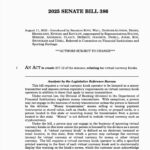China Nuclear Expansion Reshapes the AI Race
Background: AI Power Demand and Nuclear Capacity
China’s nuclear expansion is drawing intense scrutiny as the global AI race accelerates. According to CryptoNews, China currently has approximately 30 nuclear reactors under construction, representing nearly half the world’s new builds. Analysts forecast that China’s nuclear generation capacity could reach around 65 gigawatts by the end of 2025 and as much as 200 gigawatts by 2040—ten times today’s levels.
Adam Livingston, author of The Bitcoin Age, claims this surge in capacity puts China far ahead in the AI race. He states that “China has pulled far ahead, not by out-coding the U.S., but by quietly cornering the one resource frontier AI needs most—energy, specifically nuclear power.” However, while Livingston’s numbers are close, recent data confirms there are no entirely new, large-scale American nuclear projects underway at present. The U.S. completed the Vogtle 3 and 4 reactors after years of delay and cost overruns, but no greenfield projects have broken ground this year.
U.S. Developments and Energy Strategies
The United States is working to reverse this trend. Recent policy reforms and executive actions led to Westinghouse announcing a plan to build 10 large reactors by 2030. Construction is expected to start within a few years, but progress is hampered by regulatory complexity, public skepticism, and the demanding logistics of nuclear construction.
Despite China’s lead in nuclear capacity, American efforts focus on increasing efficiency, deploying Small Modular Reactors (SMRs), and integrating renewable sources. U.S. investments in foundational AI research, chip design, and cloud infrastructure remain significant advantages. Market-based strategies paired with policy shifts may help offset current delays in large-scale nuclear rollouts.
Energy, AI, and the Future Competition
The connection between energy and AI is increasingly clear. Training advanced AI models, including GPT-4, consumes tens of megawatts per session. Recent figures indicate global data center electricity consumption hit 415 terawatt-hours in 2024—projected to double by 2030, mainly due to AI’s escalating power requirements (Vizi: Cryptocurrency and AI Infrastructure).
China’s direct, top-down approach to industrial policy has enabled its rapid nuclear buildout and gives it an edge in supporting AI infrastructure. Nonetheless, experts note that improvements in efficiency, smart grids, and distributed computing could close the gap. The U.S. is not out of the race, with both countries actively pursuing energy strategies to supply their AI economies. Livingston’s assertion that China has already won is called “premature” by some analysts, who point to the evolving and multi-dimensional nature of the competition.
What’s Next for the Global Tech Power Struggle?
The growth in China’s nuclear capacity signals an important shift in the global contest for AI dominance. Nations that control steady, clean power may have a long-term advantage as the energy needs of AI continue to mount. The outcome, however, will depend on a broader mix of factors, including regulatory adaptation, innovation in energy usage, and technological breakthroughs beyond nuclear generation alone.
The AI race is far from over. While China’s nuclear program is advancing rapidly, U.S. initiatives and new technologies in generation and efficiency could reshape the landscape in the coming years.



















